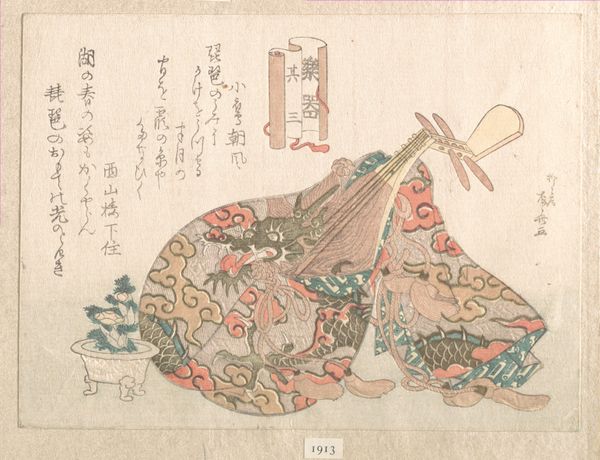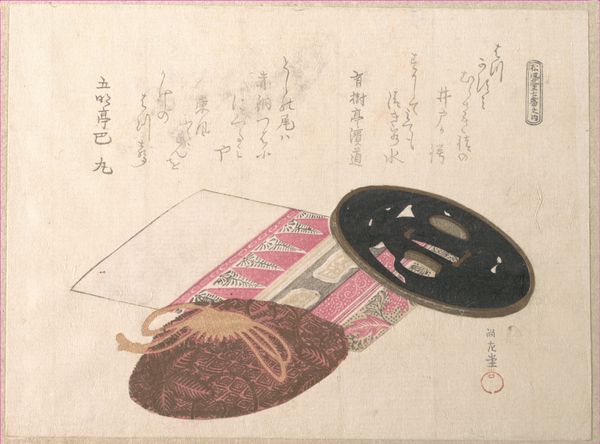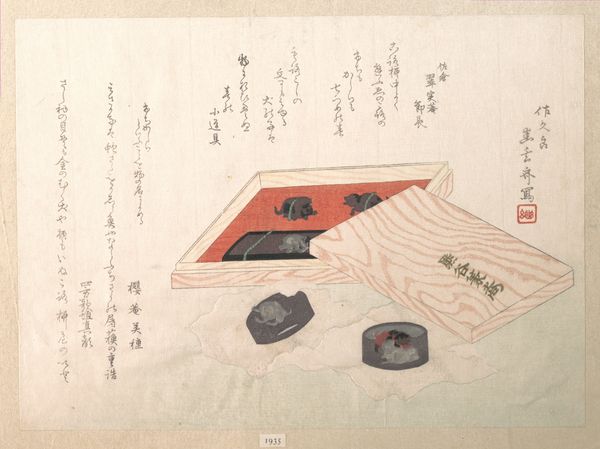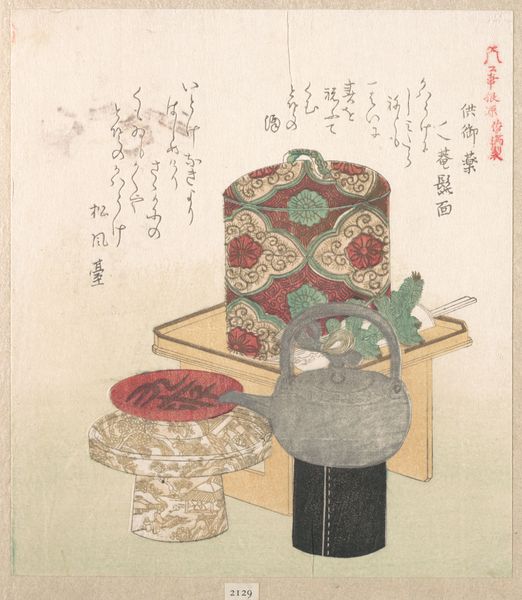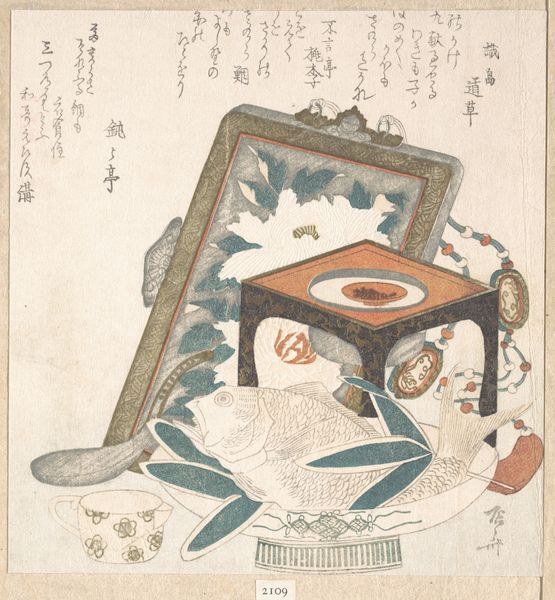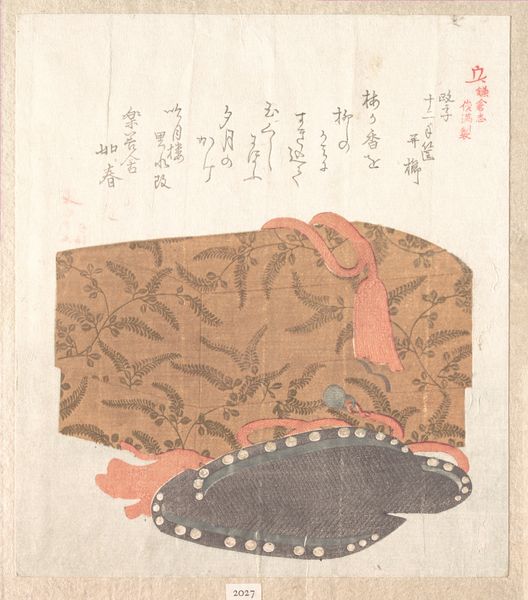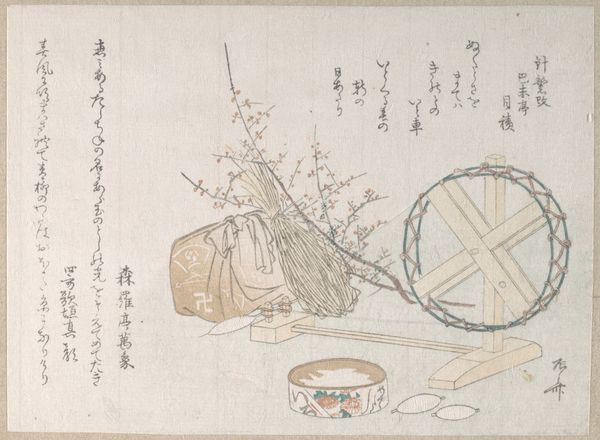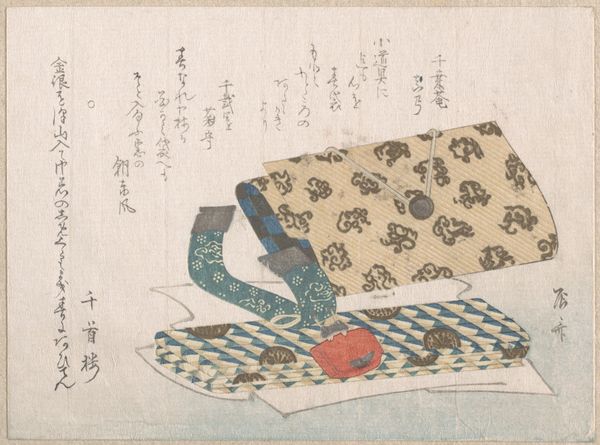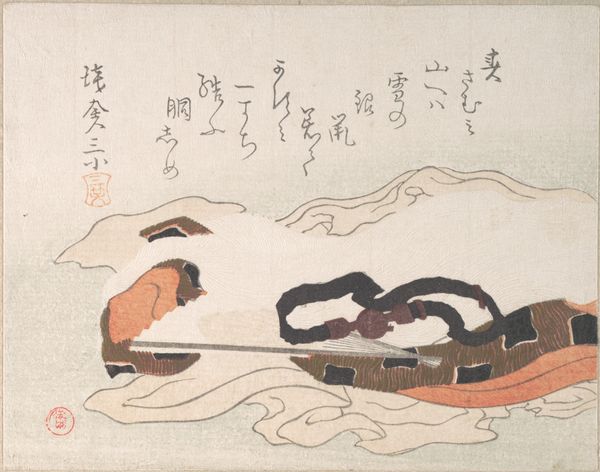
print, woodblock-print
#
water colours
# print
#
asian-art
#
ukiyo-e
#
woodblock-print
Dimensions: 8 5/16 x 10 9/16 in. (21.1 x 26.8 cm)
Copyright: Public Domain
Editor: Here we have Ryūgetsusai Shinkō’s woodblock print from the 1810s, titled "Bag Called a 'Long Life' Bag." It’s a charming and delicate image of everyday objects. How might we interpret this work through its cultural and historical context? Curator: Given the title, the “long life bag,” and its depiction via the ukiyo-e tradition of prints popular amongst the merchant class, it seems clear that this print is intended as an auspicious image – perhaps meant to circulate commercially? We see elements associated with longevity, potentially for use as gifts. Considering ukiyo-e's rise in popularity, does this imagery speak to you in relation to the growing mercantile class and their aspirations? Editor: That's a great point! The connection to the rising merchant class makes sense. So, instead of aristocratic or religious imagery, we see items associated with their world. Curator: Exactly. Think about the role prints played. Were they merely decorative, or did they function as a form of social currency, showcasing status or aspirations? Furthermore, considering this was produced during the Edo period, what might this tell us about social mobility? Editor: It shows that they valued longevity, or maybe just the idea of it as their status evolved. That's quite different than I first considered. Curator: Indeed! It highlights how the seemingly simple act of depiction holds a world of societal meaning, and can be intertwined with both commercial and social ambitions. Editor: I didn't realize an image of bags could speak volumes about commerce and social aspiration of its time. Curator: Art serves as a portal, reflecting and shaping the narratives of its era, with objects often speaking louder than figures.
Comments
No comments
Be the first to comment and join the conversation on the ultimate creative platform.
